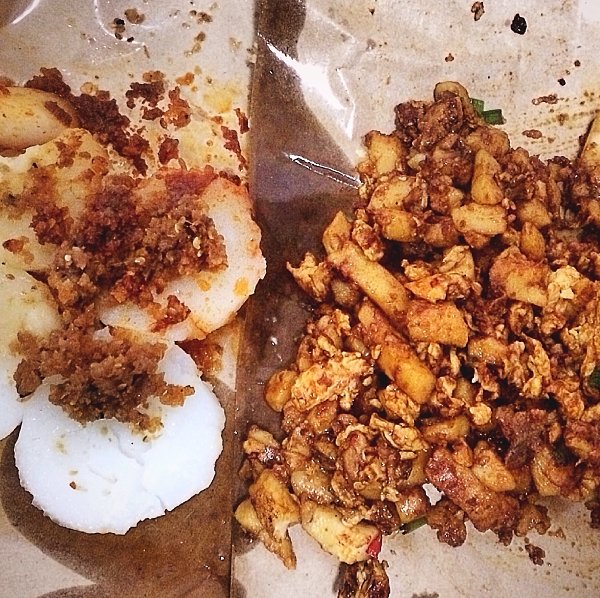
One Should Never Have A Single‑Dish Breakfast

One Should Never Have A Single‑Dish Breakfast
A Feast in Singapore
Singapore, Saturday morning. I’m meeting an old acquaintance for one of our impromptu, increasingly rare catch-up sessions over breakfast. On any other occasion, the location for our meet-up would be one of the many brunch cafes that have mushroomed around the island in recent years. Probably a Melbourne-inspired, industrial or wood-themed “hole-in-the-wall” replica dispensing single-origin coffees, eggs cooked a dozen ways, and red velvet cheesecakes.
This time around, however, we decide to forget brunch, and opt to jiak png (eat rice) instead. Forgo coffee for kopi, cake for kueh, and “Benedict” for “soft-boiled.” And so, tissue paper in tow—to mop up residual gravy stains on our mouths and beads of overeating-induced sweat—we decide to meet at the neighborhood hawker centre in the searing, sticky morning heat.
Started in the 1960s as a measure to address the problems of unhygienic food preparation by unlicensed street stalls, the hawker centre has grown to become a cultural and lifestyle icon of Singapore, developing in its identity over the years. While its look and feel may have changed substantially, its modus operandi and weekend breakfast vibe remains largely (and thankfully) unspoiled.
An organized mess of single-dish specialists drumming up dish after dish of consistent goodness, like clockwork. Shared table-spaces with inscribed numbers, alongside cutlery and crockery marked with colored sticky tape, all for easy identification by hawkers during the collection and clean-up process. The layered aromas of all-too-familiar breakfast staples: fresh soya bean milk and fried dough sticks, fishball noodles doused with chilli paste and vinegar, nasi lemak (coconut rice with anchovies, egg, fried chicken wings, and sambal chilli), and more, enough to dazzle and overwhelm the uninitiated. Groups of “uncles” sipping kopi-o (black coffee), reminiscing past glories, clinging on to their stories as the world changes too quickly around them. Housewives lugging carts of groceries, satiating their cravings for kuay chap (braised innards) after completing yet another energy-sapping mission of haggling, bargaining, and settling their weekly supply of raw food. Weary looking families savoring their two hours of weekend downtime after putting in a 60-hour week. This usually plays out with dad catching up on the weekend edition of the newspaper, while mum shovels chopstick-fuls of noodles into her mouth, before doing the same for her iPad-swiping toddlers (because, when done to perfection, fried noodles are a treasured resource and should be treated the same way as oxygen during a flight emergency).
My bellied buddy settles for the chai tow kueh, a sticky, oily mess of stir fried radish cake cubes with sweet soy sauce, eggs and chilli, served on a piece of greaseproof paper (which gets drip-stained in no time, hence “proving the grease”). I choose the chwee kueh, an equally sinful carb-fest of steamed rice cakes smothered with an oil-deluged concoction of pickled radish and chilli paste, also delightfully plated on greaseproof paper. The melodious sound of sizzle catches our attention, and before long our kuehs are joined by a plastic bagful of hum chim pengs (deep fried cinnamon coated fritters) and half a dozen five-spiced fried chicken wings. Which had to make way for a few parcels of otah (spiced fish custard wrapped in banana leaf and barbequed over coal). This was washed down with mugs of kopi peng (iced coffee), and accompanied, of course, with the most important staple at every hawker centre breakfast, good conversations about bad workweeks.
“But, in the end,” my friend said, gesturing at our overflowing table, “Ultimately, it boils down to this. This is what I work so hard for. One should never have a single-dish breakfast, and I don’t intend to reach that state any day in my life. It’s just, sad, you know?”